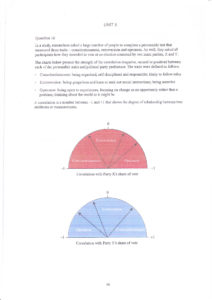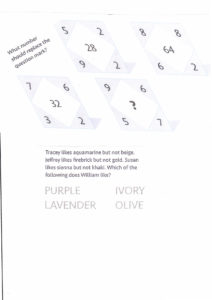Brain teasers and the AST
How Year 12 improved their thinking skills for AST
How did you get on with those two Brain Teasers? (Answers are at the end of the article). Year 12 Thursday morning AST preparation sessions always started with Brain Teasers which helped with logical thinking, looking for patterns in information and thinking laterally. Then Mr Jack Dowling and I would follow up with actual questions from past AST papers. These sessions were voluntary, started at 8.00a.m. and lasted for 45 minutes. Up to a dozen students each week, usually the same boys, took advantage of the chance to work together to improve their skills. Every Year 12 AST student had one period per week each Friday throughout the year with a ‘guest presenter’ on a particular skill, before practising past questions.
One vital part of both sessions was that students had to justify their answers to each other, explaining their reasoning. This aspect of the preparation reflects one style of AST question in which marks are gained for ‘discussing’ data or information presented to them. An example is given below, together with some suggested points that need to be included in a ‘good’ answer.
Current Year 11students will have their own preparation programme designed to sharpen their skills and improve their abilities, even if the way it is presented is different!

Question Discuss what this study shows about the relationship between personality traits and voting preferences. (4 marks)
Answers
What number should replace the question mark? 93 (multiply the diagonals and add the total)
Which does William like? Lavender (look at the third letter of the name and the first letter of the colour.)
Personality and voting; important points to make;
Party X attracts people with strong ‘openness’ (strong correlation) but low conscientiousness
Party Y is the opposite
Extroversion is not correlated or only weakly correlated, both positively and negatively with either party, but Party Y has the slightly stronger positive correlation than Party y.
Norman Foskett (AST Coordinator)

